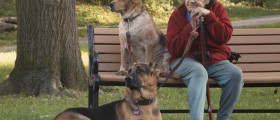
Introduction
The process and goal of the training a dog involves teaching the pet to perform actions in response to commands that the dog is trained to recognize and comprehend.
There are many different methods and objectives, including basic obedience training and specialize training for dogs that work with the police, military, rescue workers, or assist disabled people, for example.
The wild dog’s natural instinct is to favor cooperation with other dogs, but domesticated dogs can interpret and respond to signals given by their human owners, which is probably a result of either instincts or breeding methods.
Basic training methods
No matter if the dog is just a house pet or will be trained for a more advanced purpose in its life, they need to go through basic training first.
Also, people want the dog to be good-mannered, behaved and pleasant to be around. People also want the dogs to keep them and their homes safe as well.
However, a dog will not learn to behave itself on its own, it needs to be trained properly.
The hardest part of the process is communication with the dog in a way that it will understand. But there is a common method that always works, which is using rewards to show the dog that it has understood something correctly and acted accordingly.
There are six basic behaviors that need to be learned by the dogs first, these commands are sit, down, stay, come, close, and heel.
It is very important to not punish the dogs violently. Even though this may lead to a form of obedience in the end, it will usually result in negative effects as well. The dog could lose enthusiasm in performing these tasks, have stress, or even become aggressive and violent.
Rewards and punishments in training
Training usually revolves around establishing consequences for a dog’s behavior and whether or not it performs the tasks asked of it.
There are four general types of consequences:Positive reinforcementNegative reinforcementPositive punishmentNegative punishmentIn positive reinforcement, the owner will add something to the situation that will increase the chance of the dog repeating the good behavior.
In negative reinforcement, something is removed from the situation in order to do the same thing.
In positive punishment, something is added to the situation to decrease the chance of the dog doing the same thing, and in negative punishment, something is removed to makes sure that the dog does not do the same thing again.
Rewards, or positive reinforcers, are things that the dog finds rewarding. They can be food treats, getting to play with a tug toy, interaction with other dogs, or increased owner attention.
















Your thoughts on this
Loading...